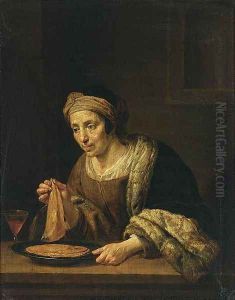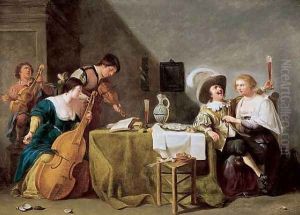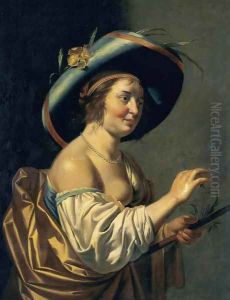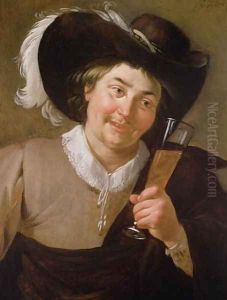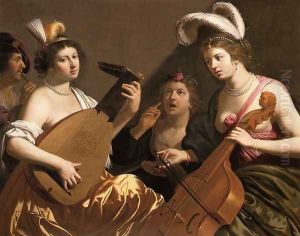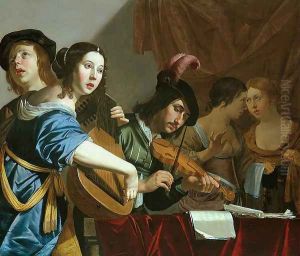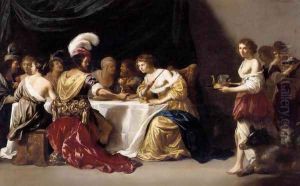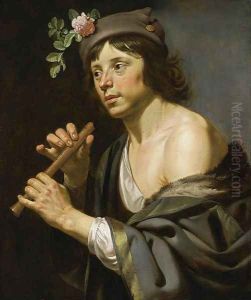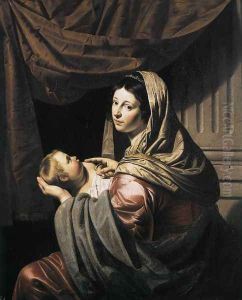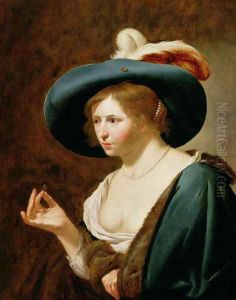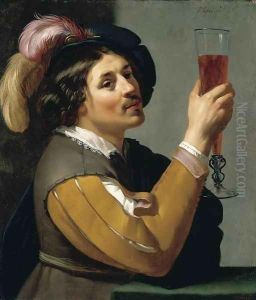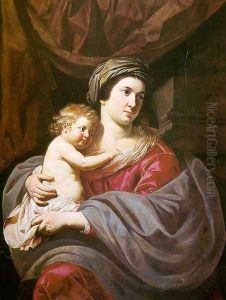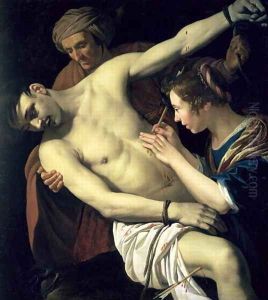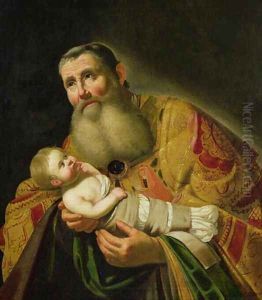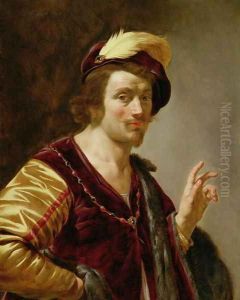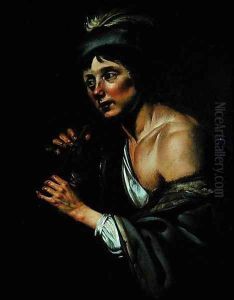Jan Hermansz. van Biljert Paintings
Jan Hermansz. van Bijlert was a Dutch painter whose career spanned the first half of the 17th century, a period known for the flourishing of the Dutch Golden Age of painting. Born in Utrecht around 1597 or 1598, van Bijlert was part of a generation of artists who were pivotal in the development of Dutch art, contributing to the era's distinctive styles and themes.
Van Bijlert's early life is somewhat obscure, but it is known that he was a pupil of Abraham Bloemaert, a prominent Utrecht painter whose influence is evident in van Bijlert's work. Bloemaert's teachings were instrumental in shaping the young artist's skills, particularly in the realms of history painting and portraiture, genres in which van Bijlert would later excel.
After his apprenticeship, van Bijlert traveled to France and Italy, a common practice among artists of his time seeking to complete their education and be exposed to the Renaissance masters. His stay in Rome, where he was from 1617 to about 1621, had a profound impact on his artistic development. During this period, he became associated with the group of Dutch and Flemish artists known as the Bentvueghels, an informal association that played a significant role in the cultural exchange between Northern and Southern European art.
Upon returning to Utrecht, van Bijlert established himself as a leading figure in the city's artistic community. His work from this period demonstrates a clear shift towards Caravaggism, characterized by dramatic use of light and shadow, a style likely influenced by his exposure to the works of Caravaggio and his followers in Rome. He became known for his genre scenes, religious compositions, and portraits, displaying a keen attention to detail and a strong grasp of human emotion.
In the 1630s, van Bijlert's style began to evolve away from the stark chiaroscuro and intense emotionalism of his earlier works. He adopted a softer, more refined approach, which aligned with the changing tastes of his clientele and the general trend in Dutch painting towards greater elegance and decorum.
Despite his success, very little is documented about van Bijlert's personal life. He was a founding member of the Utrecht Guild of Saint Luke in 1611 and served as its dean multiple times, indicating his prominent status within the local art community.
Jan Hermansz. van Bijlert died in Utrecht in 1671, leaving behind a body of work that reflects the dynamic transitions in Dutch painting during the 17th century. His contributions to the Dutch Golden Age, particularly in the development of Utrecht Caravaggism, remain his most enduring legacy, securing his place among the notable artists of his time.
